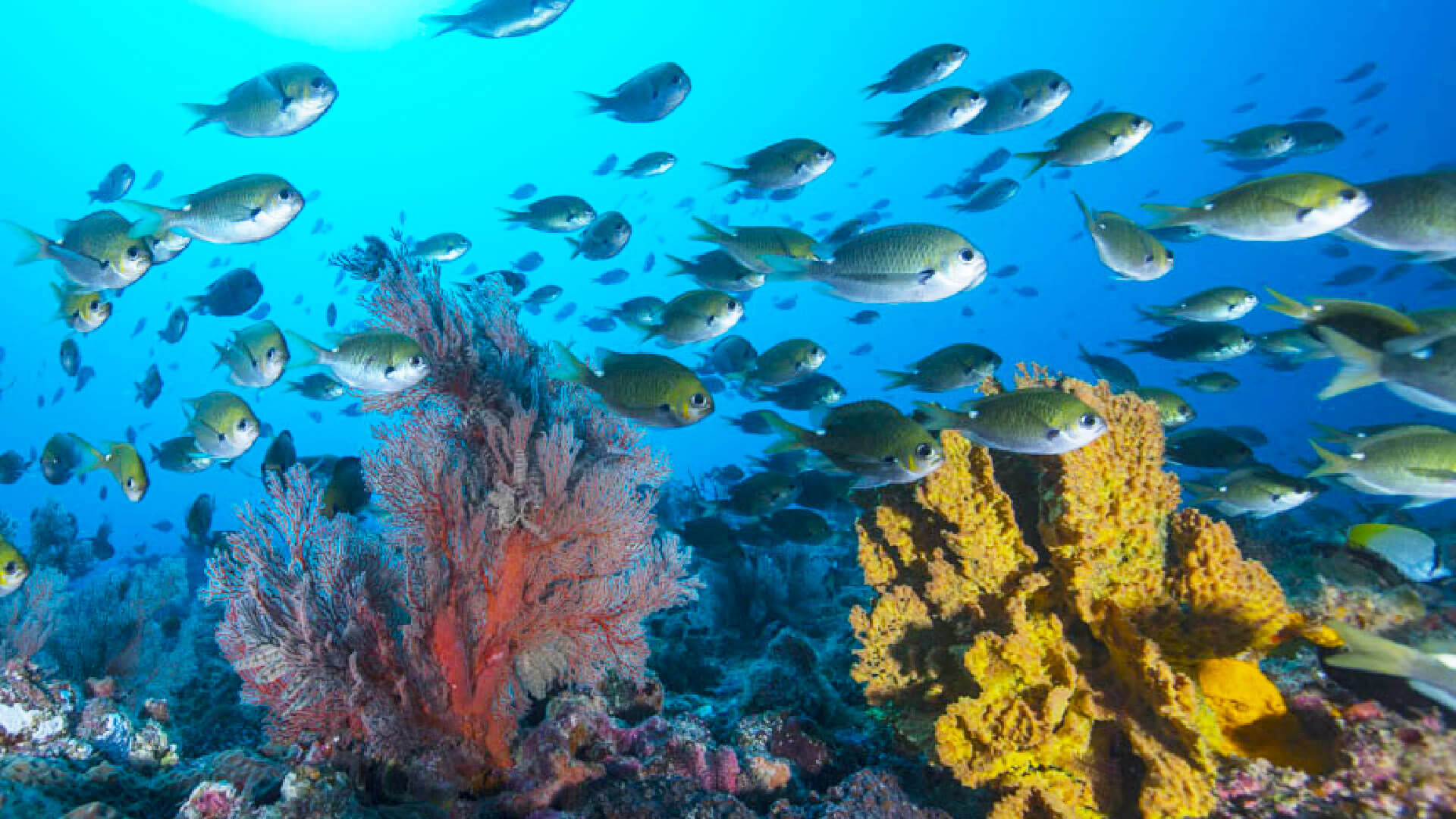
5 reasons to dive Australia’s pristine southern-most coral reef
For divers looking for a once in a lifetime dive experience, diving Australia’s coral reefs is it.
Australia is host to some of the most untouched and abundant coral reefs in the world. UNESCO World Heritage listed Lord Howe Island enjoys the world’s southern-most coral reef, offering some truly incredible diving experiences. Here are our five reasons why you need to dive Lord Howe Island’s extraordinary coral reef now.

Its unique geography makes Lord Howe Island an underwater playground
Lord Howe Island is a remnant of an extinct volcano which has created a truly unique geography.
Divers can choose from the west side of the island which enjoys an extensive barrier coral reef, a sheltered lagoon and a sandy beach or the east side of the island which enjoys fringing coral reefs immediately offshore of its beaches.
Lord Howe Island’s unique underwater topography of trenches, caves and volcanic drop-offs creates an underwater playground unlike any you’ll see anywhere else in the world.
The world’s tallest sea stack, Ball’s Pyramid, located 26km south of the island provides some of the best diving in the world.

Lord Howe Island is host to abundant and vibrant marine life
Lord Howe Island is located at the crossroads of five major ocean currents, including the warm East Australian Current which runs down the Great Barrier Reef and into the Tasman Sea. Combine this with the island’s isolated location and you get a truly unique marine ecosystem around the coral reef.
The reef exists within Lord Howe Island’s protected Marine Park and is subject to fishing restrictions, meaning that marine life is abundant. The reef is host to over 90 species of coral and 500 tropical, sub-tropical and temperate fish species, many of which are endemic to the island.
On a dive at Lord Howe Island you can see a number of incredible fish species including the Lord Howe Double-Header Wrasse, McCullochs Anemone fish, Violet Sweep, Amberjack, Kingfish, Silver Drummer, Rainbow Runners, Trevally and occasionally Marlin, Wahoo and Ballina Angelfish. Spanish Dancers and dolphins make for a colourful and vibrant underwater world. You can even dive with sharks – Galapagos whalers are a frequent and harmless visitor. A variety of species of turtle also inhabit the reef.

Lord Howe Island’s crystal clear waters provide amazing visibility
Because of Lord Howe Island’s isolated location which is far offshore, the island enjoys some of the most crystal clear waters on earth.
Visibility is so good that those on glass bottom boats, swimmers, snorkelers and kayakers will have excellent visibility of the reef and its plentiful marine life. Visibility on a dive is up to an incredible 40m outside of the lagoon and up to 20m inside the lagoon.
For keen underwater photographers, there are countless opportunities to capture the many colourful and diverse fish species in these clear waters, with fish unafraid of humans and therefore easily approached.

Over 60 world-class dive sites are at Australia’s doorstep
Access to Lord Howe Island’s amazing dive sites is only a 10-20 minute boat ride from shore, and there are over 60 world-class dive sites to choose from. Dive sites range from beginner to advanced and average 25m in depth. More advanced dives are available at Ball’s Pyramid and include drift dives and cave dives.
For Australians, this means we have some of the world’s best diving on our doorstep. Located only 500km from the North Coast of NSW, Lord Howe Island is a short and direct flight from Sydney, Brisbane or Port Macquarie – meaning you could be having a once in a lifetime diving experience within hours.

Lord Howe Island’s coral reef is in pristine condition
Lord Howe Island is in a remote and protected location. Lord Howe Island has a truly pristine and untouched marine environment, with one of the most vibrant and colourful coral reefs in the world.
Follow us on
instagram
Stay UP TO DATE
Subscribe now and receive the latest Lord Howe Island news and stay up to date.



















